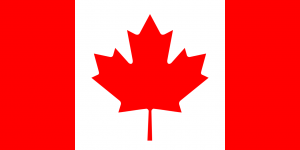Transport Canada has launched a draft of latest drone legal guidelines, which the world’s main drone producer DJI says may considerably restrict the trade.
“While DJI is pleased some operating restrictions from earlier Interim Orders have been eased, the draft rules as written would significantly limit safe and responsible drone use,” says DJI’s assertion. “The rules would also make it harder for Canadian innovators and entrepreneurs to develop new ways to use drones in business, education, agriculture and public safety, leaving Canada to fall behind in realizing the benefits of drones.”
A main downside with the brand new guidelines is that they “make no distinction between recreational and commercial operations,” which might imply that anybody flying a drone for enjoyable of their yard would wish to comply with the identical rules as a industrial operation with a big fleet of commercial drones. Such a transfer would clearly curb the leisure drone trade.
“We are disappointed that Transport Canada has taken an overly restrictive approach for its new proposed drone rules,” mentioned Brendan Schulman, DJI Vice President of Policy and Legal Affairs. “Strong restrictions placed on drones in built-up areas – essentially all locations where people live – overlook the benefits drones can provide to cities and will result in millions of Canadians not having the opportunity to realize the full potential of this emerging technology.”
Schulman pointed to a number of issues with the draft rules, together with:
- A compulsory $100,000 insurance coverage requirement for any drone that weighs greater than 250 grams – lower than the load of two hockey pucks
- A requirement that drones can’t be flown inside 100 toes of individuals, which might immediately make it unlawful for hundreds of thousands of Canadians to fly a small drone in their very own backyards.
In addition, the draft creates a requirement that producers certify their merchandise to a set of requirements (that are, as but, undefined) earlier than they can be utilized for sure functions. This would create a big burden on all producers – and will put smaller producers at a big drawback available in the market.
DJI’s Corporate Communications Manager, North America, Adam Lisberg, tells DRONELIFE that the corporate desires operators to pay attention to the potential adjustments and take the chance to touch upon the draft. “Millions of people around the world enjoy flying drones safely and responsibly to see the world around them from a new perspective, make amazing photos and videos, and explore the world of science and engineering,” says Lisberg. “But Canadians would face special burdens under these proposed drone regulations, and it’s important that drone enthusiasts in Canada make their voices heard by submitting official comments on just how those burdens would affect their ability to enjoy the skies.”
Comments could be submitted till October 13, 2017 to this handle.
 Unmanned Aerial Vehicle The latest drone news
Unmanned Aerial Vehicle The latest drone news



